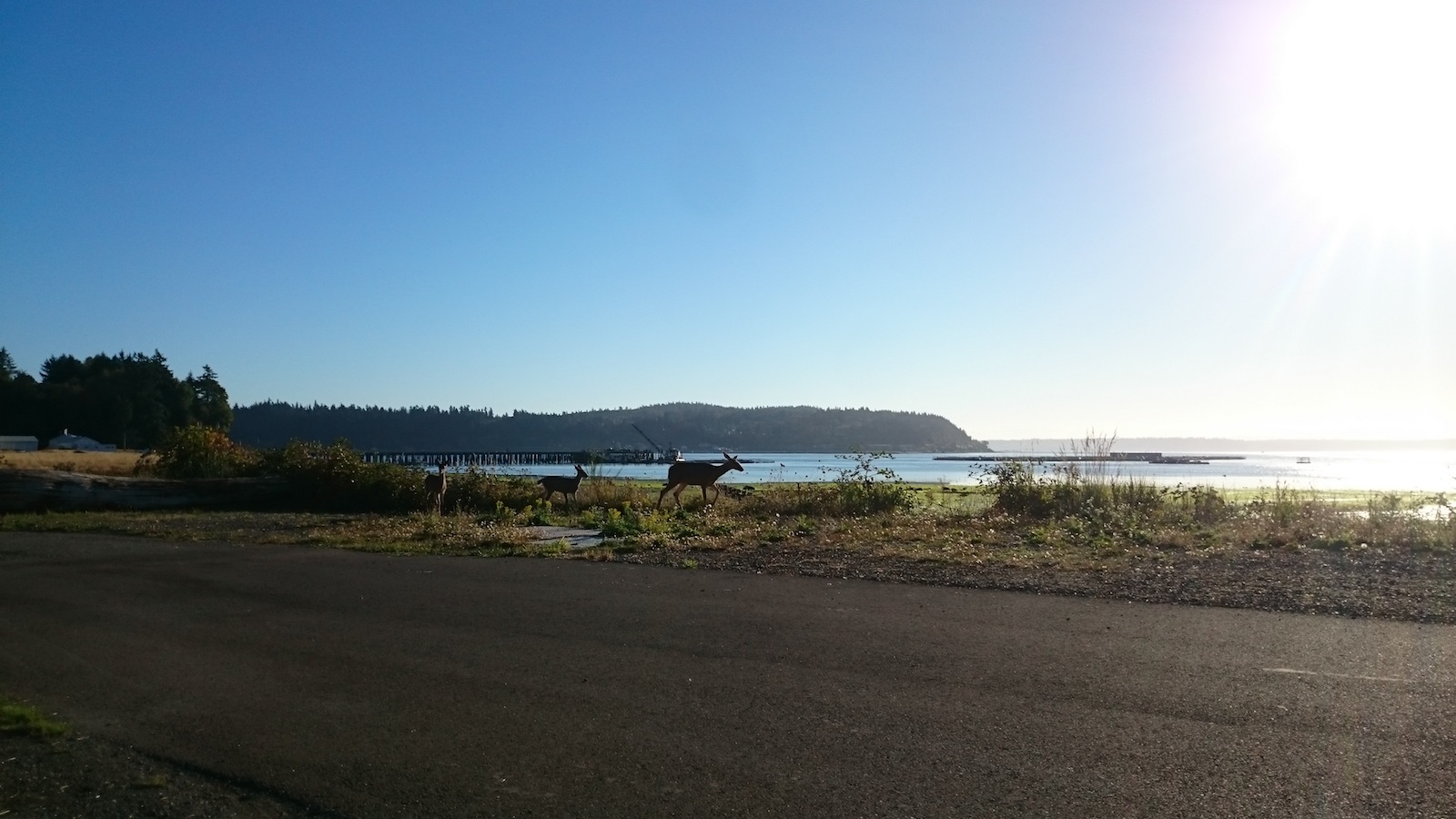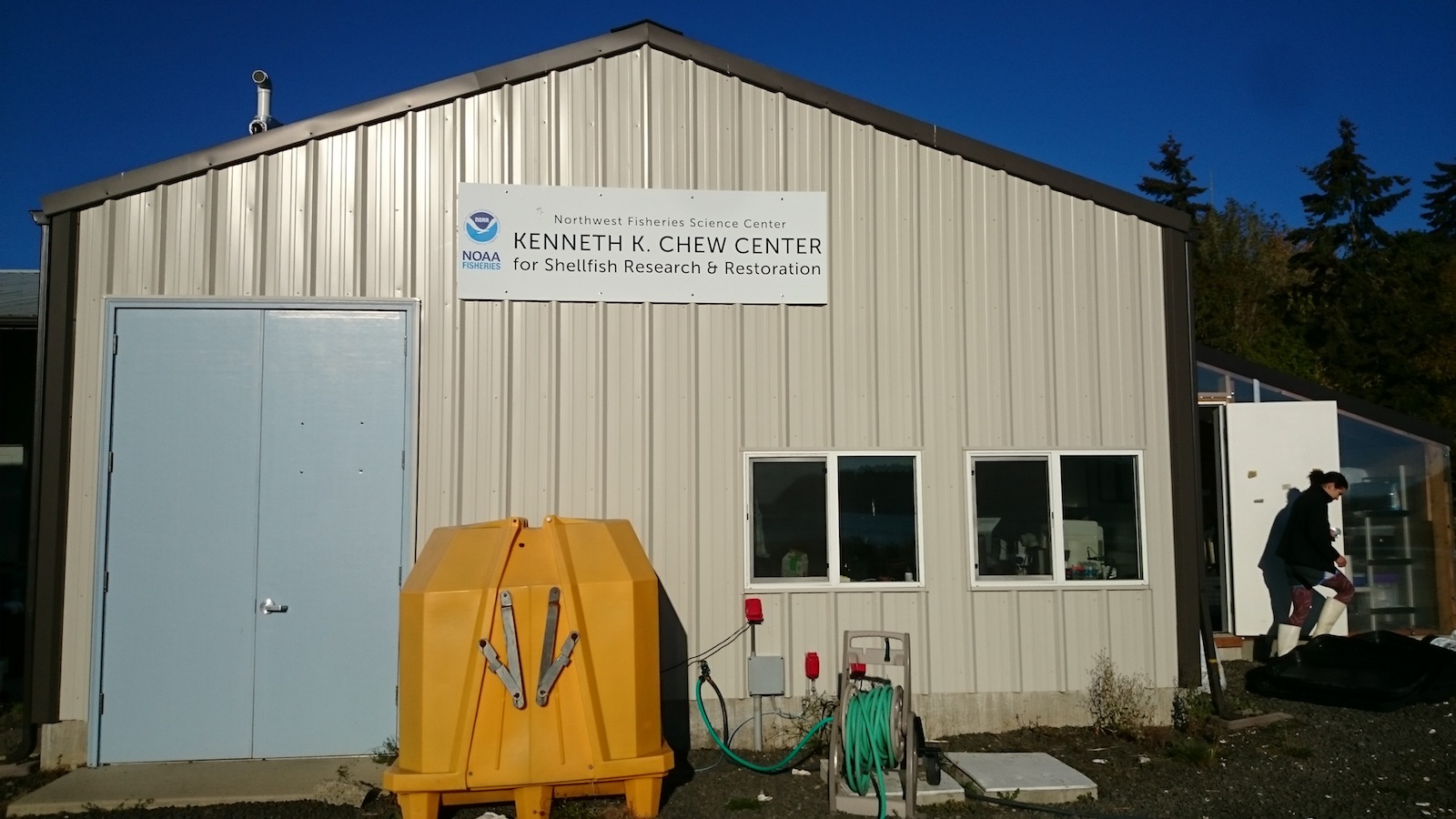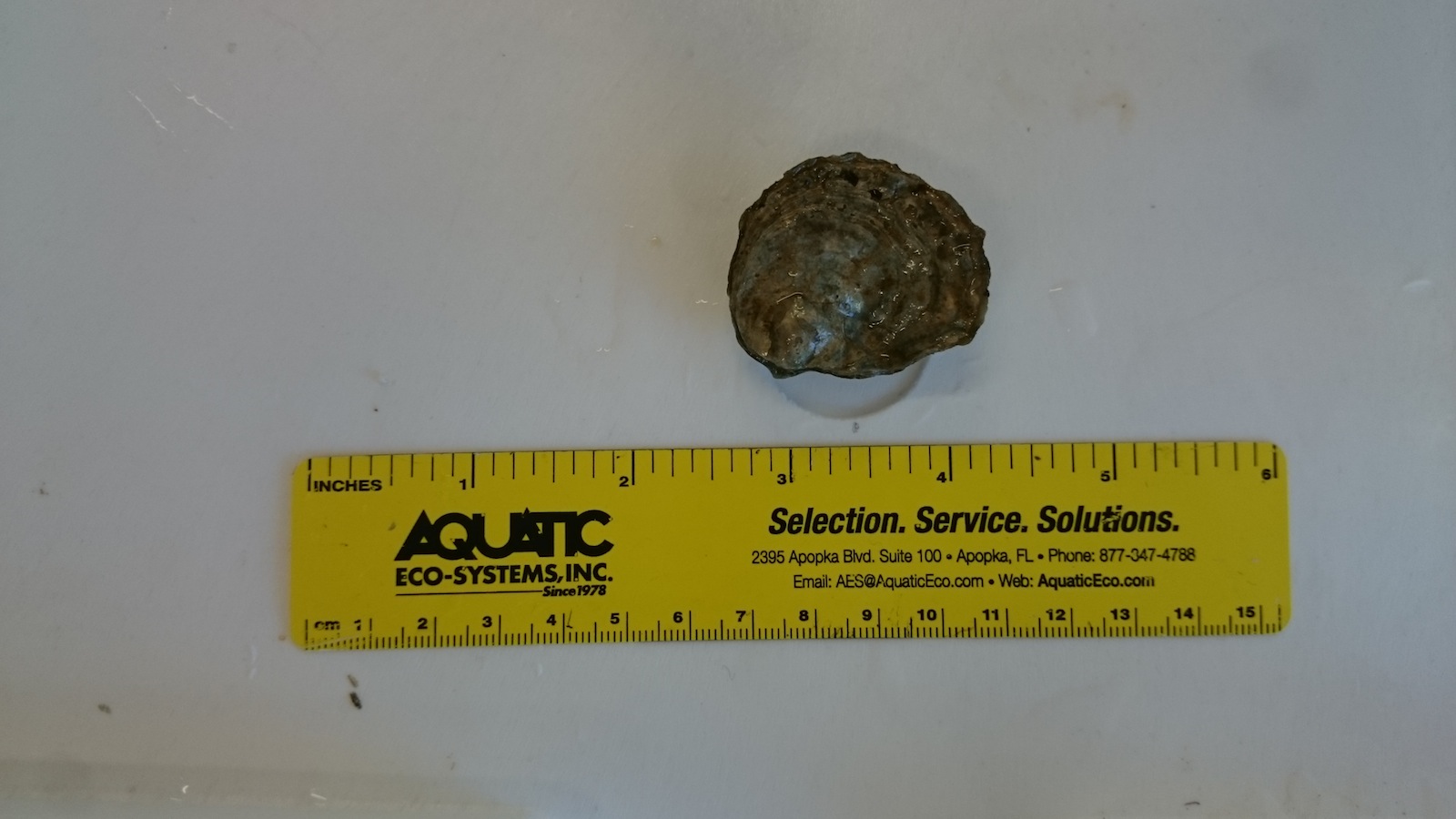I helped Katherine Silliman with her oyster sampling today from her ocean acidification experiment with Olympia oysters (Ostrea lurida) at the Kenneth K. Chew Center for Shellfish Research & Restoration, which is housed at the NOAA Northwest Fisheries Science Center at Manchester in a partnership with the [Puget Sound Restoration Fund (PSRF)(http://www.restorationfund.org/). We sampled the following tissues and stored in 1mL RNAlater:
adductor muscle (A)
ctenidia (C)
mantle (M)
When there was sufficient ctenidia tissue, an additional sample was stored in 75% ethanol for potential microbial analysis.
Tissue was collected from two oysters from each of the following oyster populations:
British Columbia (BC)
California (CA)
Oregon (OR)
Oysters were sampled from each of the following tanks:
1A
2A
3A
4A
1B
2B
3B
4B
Tubes were labeled in the following fashion:
Population & Tank (e.g. OR3B)
Tag#
Tissue
If no tag was present on the oyster, the oyster was assigned a number (beginning at 150 and increased sequentially) and photographed with a ruler for future measurement. White colored tags were written with the number followed by the letter ‘W’ (e.g. 78W) - no tag color info was recorded for other tag colors.
Additionally, gonad developmental stage was roughly assessed: ripe, kinda ripe, or not ripe.
All info was recorded by Katherine in her notepad. All samples were retained by Katherine (not sure where she stored them).
Utensils were flame sterilized between oysters and gloves/work surfaces were washed with a 10% bleach solution between oysters.
Here are a few pics from the day:
 (http://eagle.fish.washington.edu/Arabidopsis/20160912_manchester_01.jpg)
(http://eagle.fish.washington.edu/Arabidopsis/20160912_manchester_01.jpg)
 (http://eagle.fish.washington.edu/Arabidopsis/20160912_manchester_02.jpg)
(http://eagle.fish.washington.edu/Arabidopsis/20160912_manchester_02.jpg)
 (http://eagle.fish.washington.edu/Arabidopsis/20160912_manchester_03.jpg)
(http://eagle.fish.washington.edu/Arabidopsis/20160912_manchester_03.jpg)